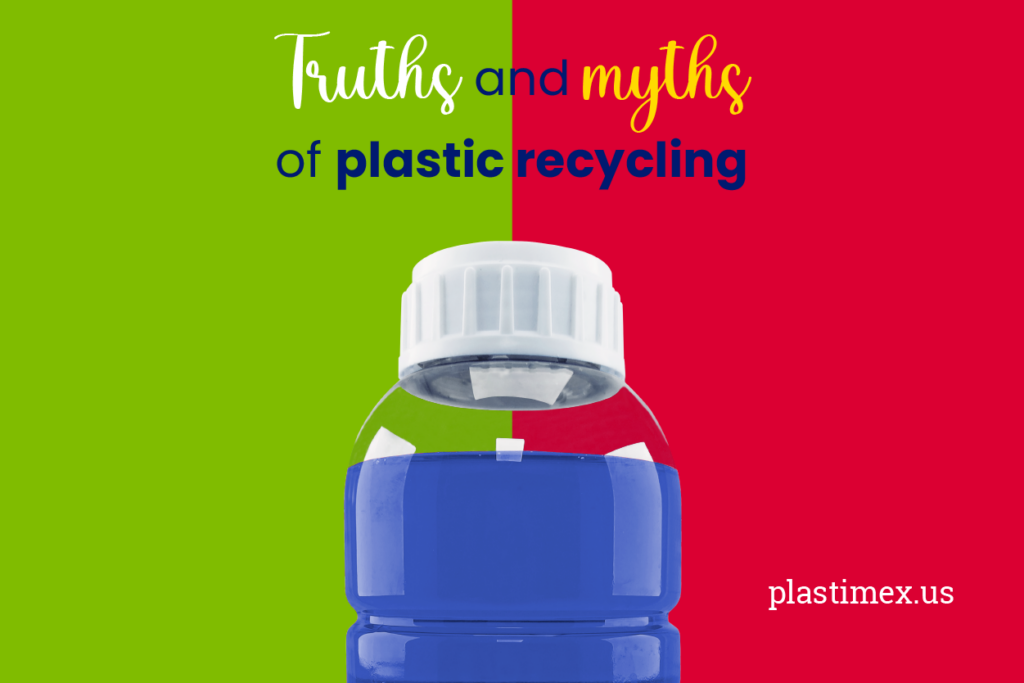Currently, it is very common to hear about the importance of plastic recycling for the care of the environment, since there is a generally negative perception of plastic, and many people think that is a harmful material. However, this material offers many possibilities and advantages to different sectors within the industry.
It is important to mention that when talking about plastics and recycling, many doubts arise that do not allow us to take full advantage of this material responsibly to prevent it from contaminating the soil, and the sea and, therefore, becoming a danger to the environment and the health of living beings. Here we help you disprove some of the most common myths.
Plastic Recycling Process
The first step to begin with recycling plastics, we find them at home, when we separate our waste and deposit it in the appropriate container to facilitate its identification. Similarly, once it reaches the recycling plant, plastic waste is again classified based on its composition. Subsequently, the plastic is crushed to create small pieces called pellets, which will be subjected to cleaning to remove impurities. As the last step, the pellets are homogenized by mechanical processes and given the desired shape and color, which allows them to be reincorporated into the production chain.
Myths And Facts About Plastic Recycling
1st. Myth: It is not important to separate the plastics because, in the end, everything comes together.
Reality. Although plastics are inevitably combined with other types of waste in collection trucks, they are separated and eliminated by manual and automatic methods before treatment. It should be noted that the classification of plastics is the first step for recycling to obtain better results. Therefore, it is very important to learn to identify the different types of plastic to classify and separate them, since this action will facilitate the recycling process in the plants. This means that it is essential plastics are separated according to fundamental material properties.
2nd. Myth: It is essential to wash the containers before recycling them.
Reality. Many people believe that it is more beneficial for the recycling process to wash the containers, however, it is an unsustainable action, since we use other resources for something that is not necessary, because in the recycling plants, the waste undergoes a process of washing so that the material is in the best conditions and is incorporated back into the production chain.
3rd. Myth: Recycled products are of lower quality and harmful to health.
Reality. To a large extent, the quality of the resin that will be obtained often depends on the type of recycling to which it is submitted. For example, primary recycling is carried out with industrial surpluses that are inserted back into the production line. This process does not preserve the properties of virgin resin, mainly for products of great capacity or size, however, they have the advantage that they have never been used.
Secondary recycling, also known as mechanical, is one of the most used; It consists of collecting, separating, washing, and reprocessing the different types of plastic, however, the purity of the material decreases considerably, which is why it is not recommended for articles that are in contact with products that are intended for human consumption.
For its part, chemical or thermal recycling is a great option for the different plastic resins, thanks to these methods it is possible to obtain the original components of said recycled materials, therefore, they maintain high quality.
If you have any questions about this topic or want to purchase 100% recyclable packaging, do not hesitate to contact us.

